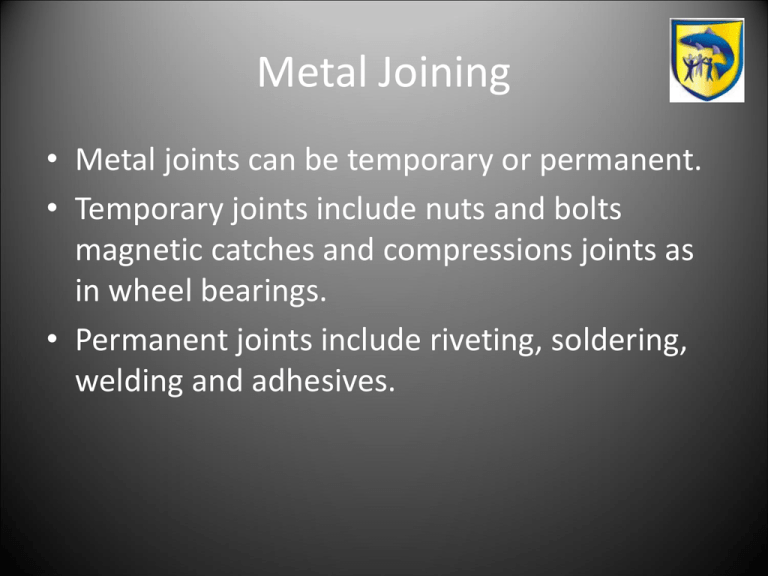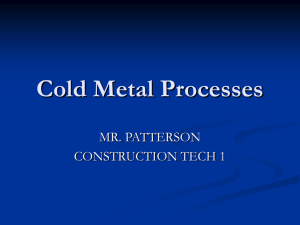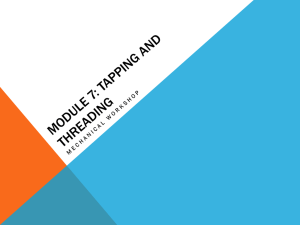Metal Joining processes
advertisement

Metal Joining • Metal joints can be temporary or permanent. • Temporary joints include nuts and bolts magnetic catches and compressions joints as in wheel bearings. • Permanent joints include riveting, soldering, welding and adhesives. Mechanical Joining. • This refers to joining materials using nuts, bolts and rivets. • There are four different thread types or forms. Mechanical Joining • The different parts of the isometric thread can be seen below. When looking at working drawings the size of the thread to be used will be given as M5 or M6. The M. stands for metric meaning every dimension is in millimeters. The number gives the actual size of the finished thread .or the outside diameter. Mechanical Joining Bolts Mechanical Joining Nuts Mechanical Joining Internal threading • Holes can have threads cut into them allowing parts to be joined together, this is called tapping. • There are three types of tap: • Taper Tap • This is used to start of the threads in the hole or to thread thin sheets. The first 5-6 threads are tapered making it easy to start the tap. • Second tap • This is used after the taper tap and is used to finish of the threads in deeper holes. • Plug tap • This tap has threads all the way down and is used to thread blind holes. • When threading a hole it must be drilled smaller than the tap to be used. When drilling you should refer to the chart next to the drilling machine Mechanical Joining. Tap and wrench. Mechanical Joining External threading • Bars or shafts can have threads cut into them using split dies. • Here the die is placed in a stock. The top of the bar is usually tapered making it easy to start cutting the threads. When starting the thread it is important to start the thread straight so as to cut a square thread. • The split die has writing on one side and this must be face down when threading. • Hard materials such as steel require oil or grease to be used to lubricate the cutting process. • When cutting threads on a bar or shaft the bar must be the same size as the split die being used. For example cutting an M10 thread requires a diameter 10 bar. Mechanical Joining Split die and stock. Mechanical Joining Riveting • Rivets can be solid or pop rivets. • Solid rivets come in four different forms Round or snap, countersunk, pan or flat head. • Solid rivets form a very strong joint and were commonly used in producing gates, ships and bridge panels. • Pop rivets are much more common now. They are used in the manufacture of aero planes and are a very quick way to join materials. Mechanical Joining. Riveting page 97





